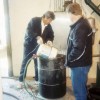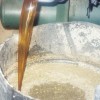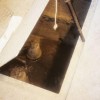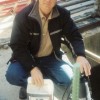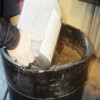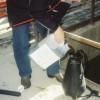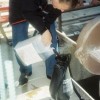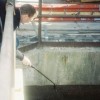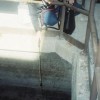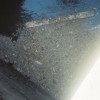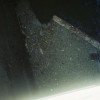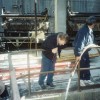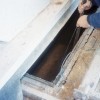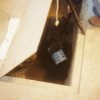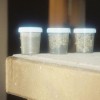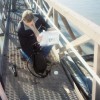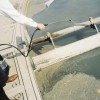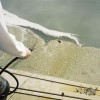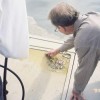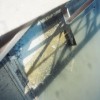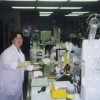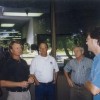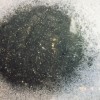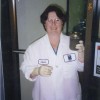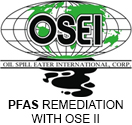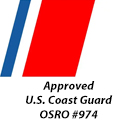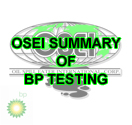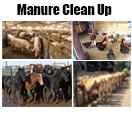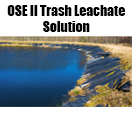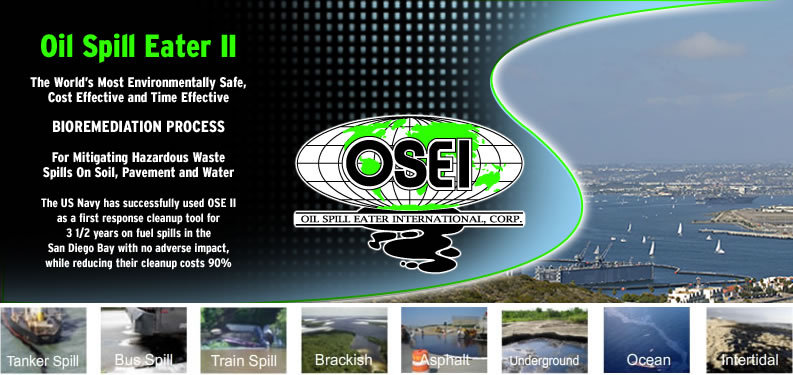
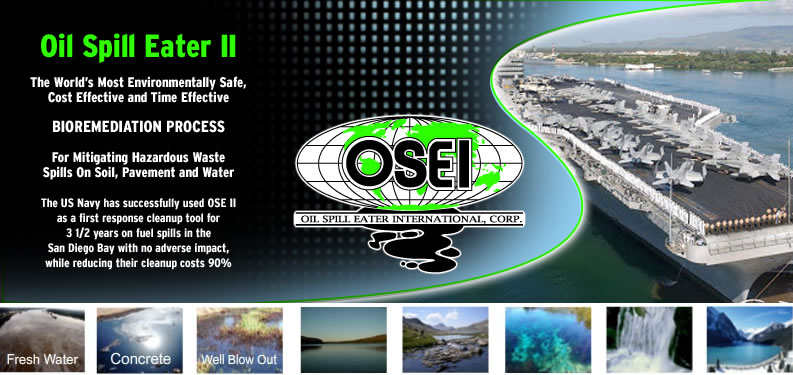
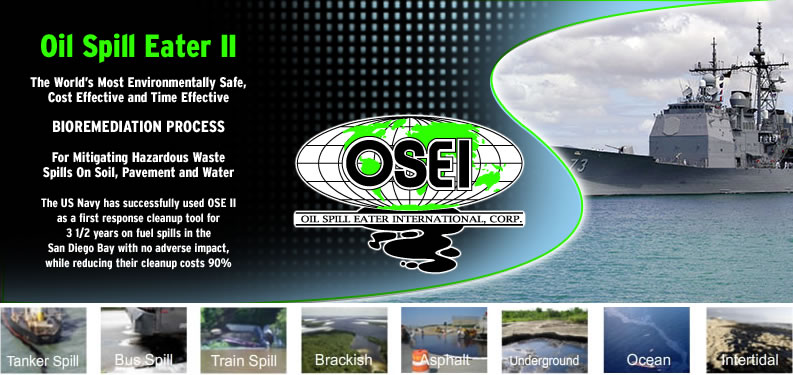
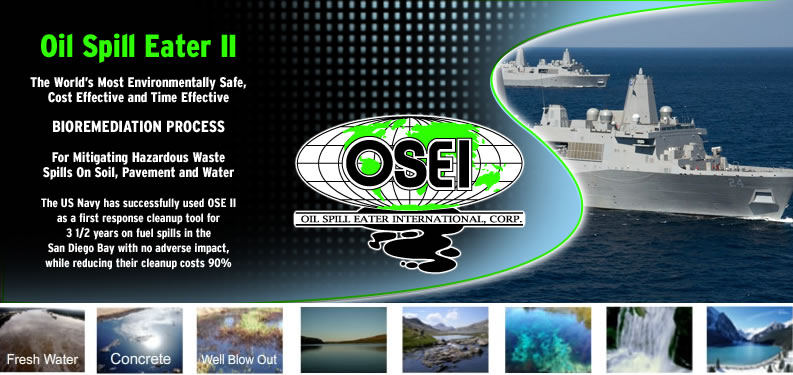
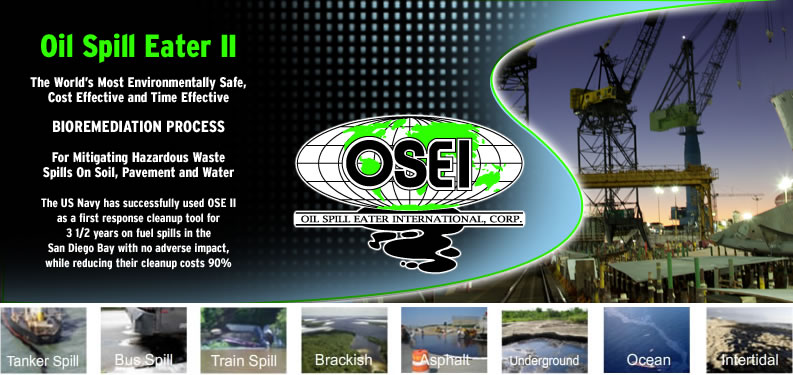
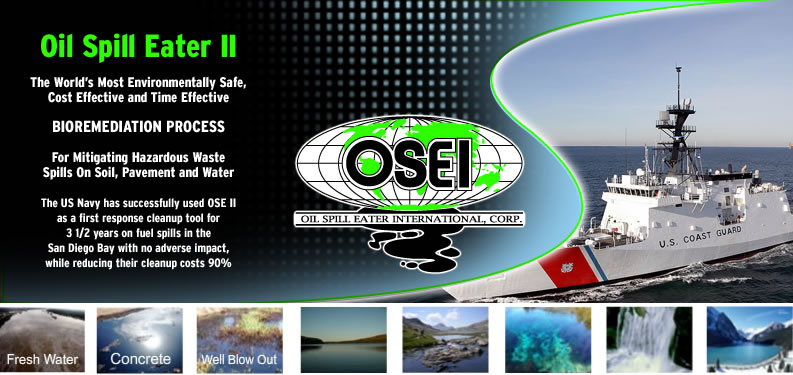
Trinity River Authority and OSE II
- Trinity River waste treatment plant personnel poured grease, oil, and waste into a 55 gallon drum in order to test OSE II
- Once the drum test was successful, a second test was initiated by the Trinity River waste treatment plant personnel
- OSE II was applied to the grease, oil and waste by Trinity River waste treatment laboratory personnel
- OSE II was tested to see whether or not grease, oil, and waste could be remediated
- Once the grease seemed to disintegrate in the inlet, the Trinity River plant personnel opened up the grease separator at the grease separation building
- The second test was set up to apply OSE II onto the surface of the grease, oil and waste water inlet retention area of the treatment plant
- OSE II was tested on grease, oil and waste in a 55 gallon drum by the Trinity River waste treatment laboratory
- The inlet surface area and depth of contaminant was determined and then OSE II was applied unmixed since the water was already present
- The 3 gallon pump up sprayer was filled a second time to apply OSE II in order to get enough OSE II to meet the 1 to 1 application rate
- OSE II was applied down 15 feet to the grease, oil and waste covered inlet surface at the Trinity River waste treatment plant
- OSE II was applied down 15 feet to the grease, oil and waste covered inlet surface from a second area at the Trinity River waste treatment plant
- The grease, oil and waste started reducing and covered a smaller area as time passed; there was a board that flowed into the inlet that seemed to contain them
- The grease, oil and waste started reducing and covered a smaller area as time passed; there was a board that flowed into the inlet that seemed to contain them
- After OSE II remained on the inlet water surface for 4 hours, a Trinity River plant personnel stirred the waters surface
- The Trinity River plant personnel allowed a vessel to sink into the grease seperator to collect a sample
- The Trinity River plant personnel pulled the sample up from the grease separator and took the it to the lab
- Once the inlet retention time had elapsed, samples from the grease separator were taken to the Trinity River plant lab
- Once OSE II had reduced the grease in the first two tests, the OSE II was tested in the large skimmer retention ponds at the plant
- Once again, OSE II was poured unmixed into a sprayer to be applied directly to the retention ponds as the ponds contained plenty of water
- The amount of surface grease, oil and waste was determined and then enough OSE II was applied to meet the 1 to 1 application ratio
- OSE II was applied along the edge of the grease, oil and waste
- OSE II was applied directly near the retention pond walls
- Trinity River waste treatment plant personnel extracted some of the waste debris from the retention pond surface
- OSE II was applied to the retention pond as Trinity River waste treatment plant personnel looked on
- OSE II caused the grease and waste to start covering a smaller area in a matter of minutes while Trinity River plant personnel looked on
- The retention ponds skim grease and debris to a collection area. After OSE II was applied, the volume of grease and debris in the collection area was reduced
- Trinity River waste treatment plant tested successfully OSE II\’s ability to remediate the grease, oil and waste from the retention pond surface
- OSEI Corporation officials discussed with the Trinity River personnel how much OSE II to order per month
- OSE II successfully remediated the waste and oil and started the molecular break down of the grease
- Once the 55 gallon drum 2 day reduction time had elapsed, samples were taken to the Trinity River waste plant laboratory
- A sample from the drum test was analyzed and OSE II was determined strongly efficient in reducing grease, oil and waste
